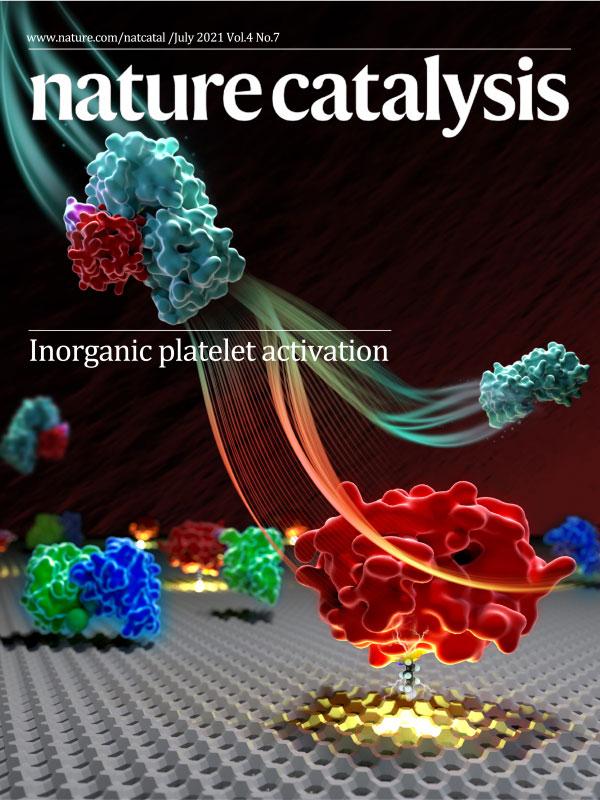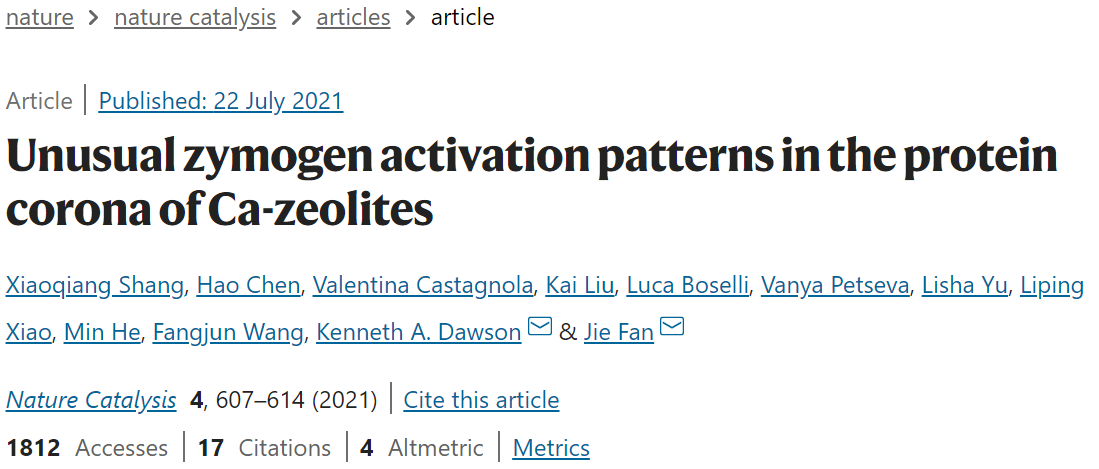Nature Catalysis中稿封面
Jul 22,2021
The image designed by Sphere Studio is selected as the Cover of Nature Catalysis in July, 2021.
The application of zeolites to prevent serious blood loss and death from haemorrhagic shocks has gained increasing attention. Here, Kenneth A. Dawson, Jie Fan and co-workers investigate the mode of action that zeolites use to initiate blood clotting at the molecular level. These insights provide a model of the zeolite-specific coagulation pathway, in which the evolving bio-zeolite interface activates and regulates the zymogen (prothrombin) in a way that enhances proteolytic activity.

Abstract
Zymogen (prothrombin) activation is central to the process of haemostasis (blood clotting) in the body, preventing serious blood loss and death from haemorrhagic shock. Zeolites comprise a family of crystalline microporous aluminosilicates that show increasing promise for use in massive bleeding control. However, the mechanism of zeolite-initiated haemostasis has remained unclear. Here, we investigate zeolite-initiated thrombin activation at the molecular level, and show that a prothrombinase complex can assemble on the inorganic surface of calcium-ion-exchanged zeolites (Ca-zeolites). Compared to natural platelet-based physiological processes, prothrombin-to-thrombin conversion on the surface of Ca-zeolite displays a striking thrombin activation pattern, with an exceptionally high plateau thrombin activity and at least 12-fold enhanced endogenous thrombin. The results provide a mechanistic understanding of how the zeolite surface functionally contributes to thrombin activation, paving the way towards the design of improved agents for bleeding management.

PREV: empty

